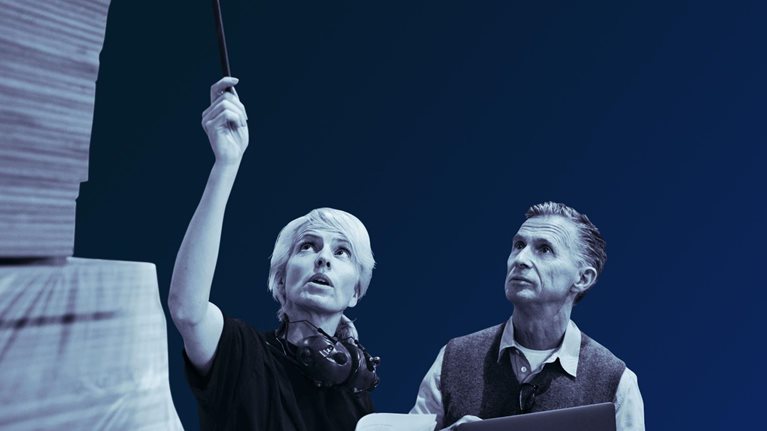The coronavirus pandemic has been an epic test of character and determination for millions of people around the world. Nothing compares with the sacrifice of workers on the front lines in hospitals and other essential services. In the business context, CEOs have had to cope with extraordinary demands: for them, the pandemic has been an ultimate leadership test.
Over the past few months, we have spoken with business leaders around the globe about how they are coping both personally and professionally. Many told us about the microhabits—daily routines and ways of working—that they have adopted to help them and their companies weather this crisis and emerge stronger from it.
The pressures can seem daunting. Coping with the sudden shutdown of the global economy was hard enough; figuring out how to restart in such an uncertain environment is, if anything, even harder, many told us. CEOs are expected to show “deliberate calm” and “bounded optimism.” Everyone wants them to demonstrate empathy—and, at the same time, be highly engaged and fact based in their actions. They are expected to make a positive difference in people’s lives with their leadership and wield both telescope and microscope adroitly—that is, have both a coherent long-term view and a set of effective short-term fixes at hand. Yet, for all their expertise, they are grappling with many new questions for which they don’t have answers, even as their teams look to them for direction. The COVID-19 crisis is a once-in-a-century event, and no training or experience in previous downturns has prepared CEOs for it.
Some are energized by the challenges and feel closer than ever to their teams. “There is far more personal contact,” said the CEO of a leading financial-services company. Others are taking a step back to reimagine their company and industry. Even so, exhaustion can quickly set in. CEOs have been “on” pretty much 24/7. Downtime is a precious rarity: “You no longer even have that 15-minute nap when the airplane takes off.” And that’s just work.
Taking care of yourself
As a CEO, you’re expected to take care of everyone—but who will take care of you? Fatigue may cloud your judgment and interfere with your ability to process information and remain levelheaded. As one CEO told us, “Don’t ignore your body. You are invincible until you are not.” Take a cue from those safety videos on airplanes: put the oxygen mask on yourself before you put it on the person next to you.
Replenish your mind and body
Find the time for simple daily routines that can preserve your mental and physical stamina. Start with your own feelings. It’s important that you are demonstrating empathy, but now you need to be open to empathy from others. As one CEO told us, “It is fine to admit that you sometimes feel powerless or unprepared for this crisis.”
We heard a number of tips from CEOs about keeping upbeat and finding new sources of inspiration. Some are as simple as waking up every morning with the same question: “What’s going to be nice today?” Sharing a sense of gratitude is a powerful daily habit. “Don’t forget to be kind to yourself,” said one CEO.
In this pandemic, business leaders sometimes feel like that king in Greek mythology condemned to pushing a rock up a hill for eternity. To avoid burnout, they need to tap into new sources of energy. CEOs we talked with have their own favorite methods. One is to identify those moments when you’ll especially need an energy booster. If it’s after lunch, “set up a regular early-afternoon call with someone you like.” If you know you have some stressful calls ahead, take a walk. Exercise is a tested way to restore energy; you could plan sports at home or around the office during your lunch break a few times a week. One CEO told us he stopped holding Friday afternoon meetings to enable everyone to catch their breath. Sleep needs to be a priority rather than an afterthought; one leader told us she makes sure to catch a good night’s sleep on a Thursday so that she can start the weekend fresh. Banning phones, tablets, and other screens from the bedroom is a good place to start. Try picking up an old-fashioned book for 30 minutes—several CEOs told us that it works well for them.
Break out of your isolation
CEOs can feel alone at the top—but they need to get out of their own lockdown. How else will you know whether your teams are critical of what you’re doing? Who will provide feedback on your management decisions? There’s an old joke in the military that those who make general or admiral are told: “Congratulations. You’ll never eat poorly again. And you’ll never hear the truth again.” That’s also the risk for CEOs.
During the pandemic, many put in place mechanisms to ensure that they received unfiltered information and contradictory viewpoints. That meant finding sources of objective, trustworthy, and good-quality information; having direct contact with operational teams; and being able to gauge the sentiment of clients, stakeholders, and even medical experts. To follow that practice, you’ll need a few individuals, both internal and external, who have the courage and independence to speak frankly and challenge you.
Family and friends are also key to breaking your isolation. Make even more time for them, not least because they are also living the crisis vicariously through you. An unwavering commitment to established routines with your family can help sustain a balanced life. Being locked down has actually made that easier—for example, it means you can cook meals together. One CEO told us he loves starting the day by having breakfast with the kids, asking them, “What did you learn yesterday?”
Adapt your personal operating model
With this crisis, it’s more important than ever to know your strengths and pace yourself. You may need to delegate more, engaging others to help, if you find managing the multiple demands on you too tough. It also means being particularly careful with your time management. Some CEOs have told us that the travel ban stemming from the COVID-19 crisis has helped them unlock valuable personal time—even as they have ramped up the volume and frequency of meetings via video. “We’re all discovering how much of a capacity trap travel is,” the CEO of a leading global consumer-goods company told us. “I feel a quite calming sense of control over my own time because I’m just less backlogged, less tired.”
It is easy to be overwhelmed by videoconferences or email; some CEOs told us the volume of their email has more than doubled during the crisis, as employees and other stakeholders turn to them personally for answers. To manage their time better, some are capping the length of internal meetings to 20 minutes or 45 minutes rather than an hour. They’re also more inclined to pick up the phone. In the current climate of physical distancing, “a quick call can be more effective and more human” than email, one CEO told us.
Seizing the moment
Once the crisis is over, everyone is likely to remember how CEOs acted during the pandemic. To pass this toughest leadership test, CEOs are paying even more attention to what they say and do.
Adjust your narrative
CEOs are used to creating a narrative about their leadership agenda when they first move into the job. In the COVID-19 crisis, those are being updated to help employees, customers, and stakeholders make sense of their actions.
Being more directly personal is one way of bolstering a change of narrative. One CEO openly shared his insights from the lockdown, talking about the importance of connections with colleagues to frame the behaviors and ambitions he would like to see in his teams. “Bonding with colleagues can help increase everyone’s individual resilience and grit,” he says.
Many CEOs are talking more often about their own and their companies’ purpose and the values they stand for. “When you are a telecom company and you start producing ventilators for the local hospitals, your company’s purpose takes a new meaning. I have had many more dialogues around what we stand for than I used to,” one CEO told us.
The audience is also bigger. COVID-19 has flattened organizations and increased the intensity of communication: CEOs talk more often to colleagues previously addressed by line management. “Normally, when you have challenging news, you really like to have your frontline leaders communicate it because they have a relationship with their colleagues,” the CEO of a healthcare-equipment company told us. “For the pandemic, I did global town halls, and I’m super candid: I gave the good news and the bad news. I expressed gratitude directly and skipped all the management layers.”
Create symbolic acts
In a crisis, a leader’s steps are subject to intense scrutiny and overinterpretation. During this pandemic, CEOs have had to be extremely thoughtful about the nature and sequence of their actions to illustrate the new style of management and the new priorities. It’s striking to note that, in many companies with a clear direction, the leadership team frequently refers to an event that achieves almost legendary status—essentially, a foundational myth—even if it dates back a few years. In usual times, this could have been an off-site retreat at which the management team bonded over a new strategy.
During the COVID-19 crisis, more symbolic and surprising moments offer themselves up, as companies contribute to society more broadly. Some CEOs are giving up their pay; others are donating their bonuses to relevant charities linked to corporate initiatives or to fight COVID-19 directly. They are also spending more time on the front line. Several CEOs told us that they have quietly tested out their digital channels’ capacity, acting as “mystery shoppers” to see how well their companies perform for customers—and how they stack up against competitors.
Others are making their physical presence felt: the CEO of a sports-equipment maker personally greeted customers in e-commerce drives on Saturdays to welcome them, listen to their concerns, and role-play to his teams the new way of serving customers. The CEO of a major private-equity firm said he has been talking to employees about previous crises after discovering that about half of them weren’t working during the 2008 global financial crisis and 70 percent hadn’t experienced the 2000 dot-com crisis. “For the young people in our organization, this is the time you will learn more and create more opportunity for your career than any other time. We have to essentially tell the stories, build the lore, and keep the connection because there’s a fair amount of anxiety.”
Finally, to give their employees and themselves a much-needed moment of levity, some have made an impromptu appearance in employees’ yoga sessions, Friday night after-work drinks (now over video), organized music nights, and even videoconferences with their pets.
Mobilize the troops
If there were ever any doubt about it, all CEOs we interviewed told us their teams make the difference more than ever. “During this pandemic, the cohesion of your team is absolutely critical,” one told us, echoing many others. CEOs said they have learned to appreciate their teams in new ways—often meeting their kids and visiting their homes over video. One leader makes a point of starting every single meeting with a note of appreciation for his team’s achievements. The crisis is also revealing the team members more prone to panic under pressure—and those taking the intensity in stride.
Many CEOs now talk to their team multiple times a week instead of once every two weeks. The global management team at a major manufacturing company used to meet four times a year; now, it convenes three times a week. The conversations are also different, “much more focused on real business decisions at hand, and we skip the generalities,” one CEO told us. Another describes how the crisis has lifted her own and her team’s “metabolic rates.” Postcrisis, she wants to retain that faster pace of interaction.
Additionally, many CEOs have noticed how smaller, decentralized teams with a clear mandate and direction have been able to make decisions more effectively than in the pre-COVID-19 governance. The greater efficiency also has come about because interpersonal politics have diminished at the top, one told us. “We have learned to trust each other much more,” said the CEO of a global consumer-goods company. “We are doing things at an incredible pace as a company as people rapidly flip into problem-solving mode. Standing up whole new factories in days. We’re revising our strategy in two weeks. And I think it’ll be more right than wrong.”
Staying ahead
In a crisis, it can be easy for CEOs to busy themselves with urgent meetings and operational issues. But the tendency to make yourself busy can also mask an underlying vulnerability: it’s a way of showing you are in control, just when you fear you may not be. To be truly effective, you need to be a leader who can look beyond the daily conflagrations, thinking and planning for the longer term even as you put out the fires raging around you.
Tune in to your stakeholders
Given the pace of change and heightened scrutiny of CEOs’ every move, they need to be particularly attuned to their stakeholders. That starts with the board and key shareholders, who typically define the CEO’s mandate. In this fast-moving crisis, business leaders need to reconfirm what their objectives can and should be. In general, interactions are more frequent: quarterly board meetings in some companies are now weekly. At the same time, the chairs of several global companies have told us they are deliberately giving CEOs more leeway than usual to tackle the crisis, in the interest of more rapid decisions commensurate with the situation. “It’s time for the board to step back a bit,” said one.
Other stakeholders are looming larger, too. Governments are playing more prominent roles in the economy. Employees are relying on you as the CEO to make the right decisions, not just for the company but also for their own livelihoods. Clients, regulators, and the public are also watching more closely, as the audience for business news has risen. Some of these expectations can be contradictory, which makes it essential to sort through them and figure out which ones are the ones you need to meet—and which ones your new strategy can exclude.
Keep an eye on the end game
Every day in this crisis can seem like an eternity, yet the decisions you take now will shape your legacy as a company leader. What should that longer-term view be? The vision you sketch out could focus on specific and tangible goals: classic metrics such as profitability, growth, market share, and so on. But you will also need to have in mind an end game of sorts, a broader vision that incorporates goals such as the ultimate purpose of the company, the values it stands for, and the sorts of people it will and won’t attract as employees and as customers.
Some companies are focusing on themes such as sustainability and climate risk that were already significant before the crisis—and which some CEOs expect to loom even larger once the pandemic has abated. “This is an opportunity today where you need to build the world in a better way,” the CEO of a leading industrial-manufacturing and -technology company told us. “This is one of the biggest responsibilities we have as leaders.”
To help think through longer-term priorities, CEOs are trying to set aside explicit time to think about what’s next. The head of a US grocery chain told us he takes a half day with his team every week to think collectively about the future, seeking to frame the questions rather than the answers. “I find that incredibly liberating. You get away from the day to day.” Many CEOs agree that this is the time to accelerate change. “We are in a grace period where my organization expects change and is ready to accept it,” we heard. Another CEO said, “This is the moment to shape our market.”
While having an end game in mind is key, staying focused on it can be challenging. There are so many problems that need resolving right now that CEOs can quickly be pulled in multiple directions. Some are opting for radical simplification—focusing only on a handful of priorities and leaving the rest to their teams—and have been surprised by just how effective that is showing to be.
The COVID-19 crisis is proving to be a revealing test of leadership. Emerging from it strengthened, compassionate, confident, forward looking, and successful will be those leaders who can cope with the extraordinary personal and professional challenges. They will be the ones who know themselves the best and can respond to the many challenges. Unlike in Greek mythology, there is no external deity who will fly to the rescue. But embracing and adopting a set of thoughtful, tested, and far-sighted microhabits can be a recipe for both business success and personal well-being. Not all of these ways of working will endure once the crisis has abated, but new habits that prove effective in the heat of the crisis can stick—and help CEOs become better leaders.


